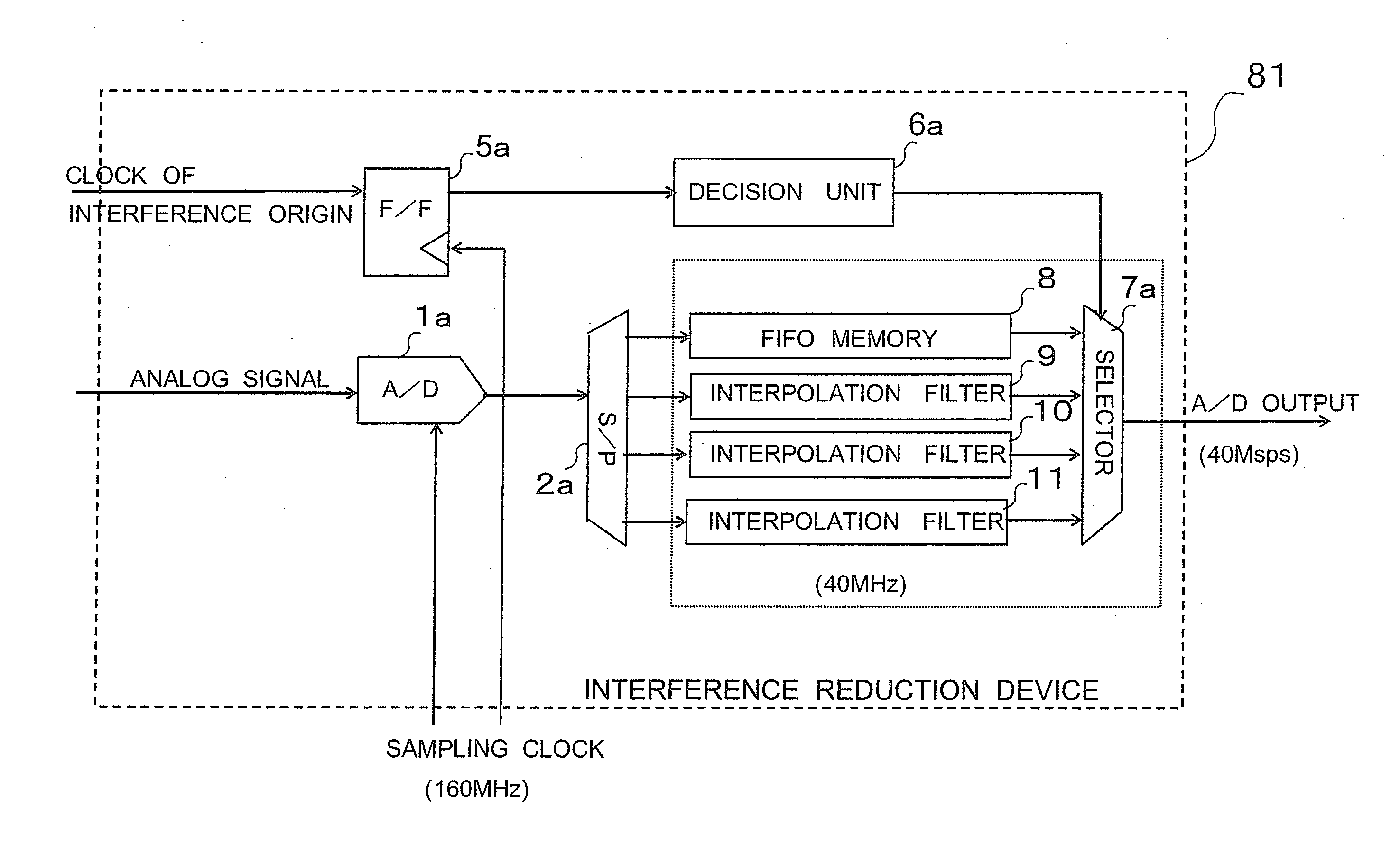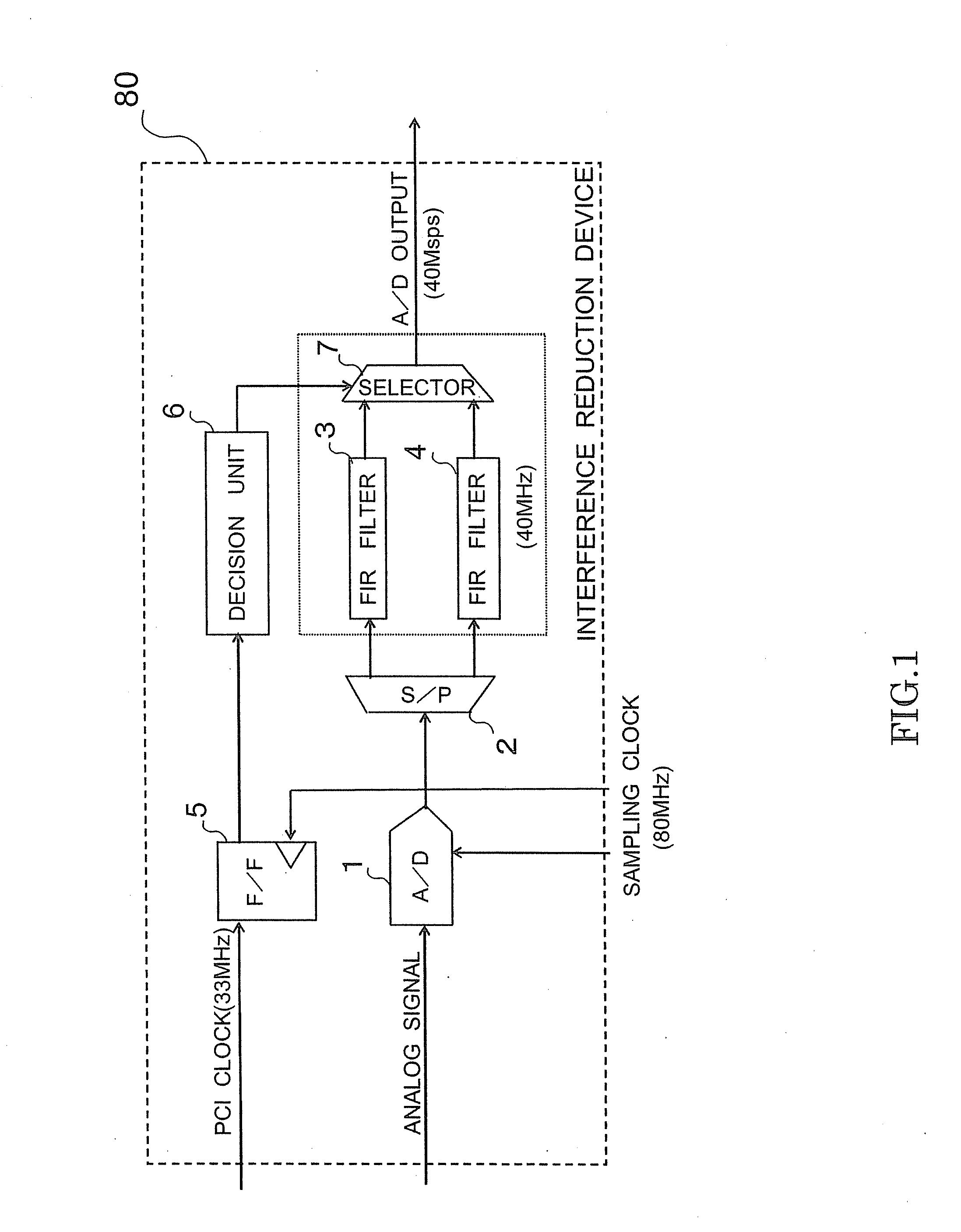Interference reduction device
a technology of interference reduction and reduction device, which is applied in the field of interference reduction device, can solve the problems of large noise and communication quality deterioration, difficult to take this measure in the layout process, and lower exerted error correction performance than the intrinsic performance level of error correction cod
- Summary
- Abstract
- Description
- Claims
- Application Information
AI Technical Summary
Benefits of technology
Problems solved by technology
Method used
Image
Examples
Embodiment Construction
[0023]Hereinafter, interference reduction devices according to embodiments of the invention will be described with reference to the accompanying drawings.
[0024]An interference reduction device according to a first embodiment of the invention will be described with reference to the accompanying drawings. FIG. 1 is a diagram showing a configuration example of the interference reduction device. As shown in FIG. 1, an interference reduction device 80 includes an analog-to-digital converter (A / D converter: “ADC”) 1, a serial-to-parallel converter (S / P converter) 2, a finite impulse response (FIR) filter 3, a FIR filter 4, a flip-flop 5, a decision unit 6, and a selector 7.
[0025]The A / D converter 1 converts an analog signal into a digital signal. Here, a sampling clock is set at 80 MHz. The S / P converter 2 performs serial-to-parallel conversion on symbols outputted from the A / D converter 1. The FIR filter 3 and the FIR filter 4 are digital filters in use. The FIR filter 4 performs interpo...
PUM
 Login to View More
Login to View More Abstract
Description
Claims
Application Information
 Login to View More
Login to View More - R&D
- Intellectual Property
- Life Sciences
- Materials
- Tech Scout
- Unparalleled Data Quality
- Higher Quality Content
- 60% Fewer Hallucinations
Browse by: Latest US Patents, China's latest patents, Technical Efficacy Thesaurus, Application Domain, Technology Topic, Popular Technical Reports.
© 2025 PatSnap. All rights reserved.Legal|Privacy policy|Modern Slavery Act Transparency Statement|Sitemap|About US| Contact US: help@patsnap.com



